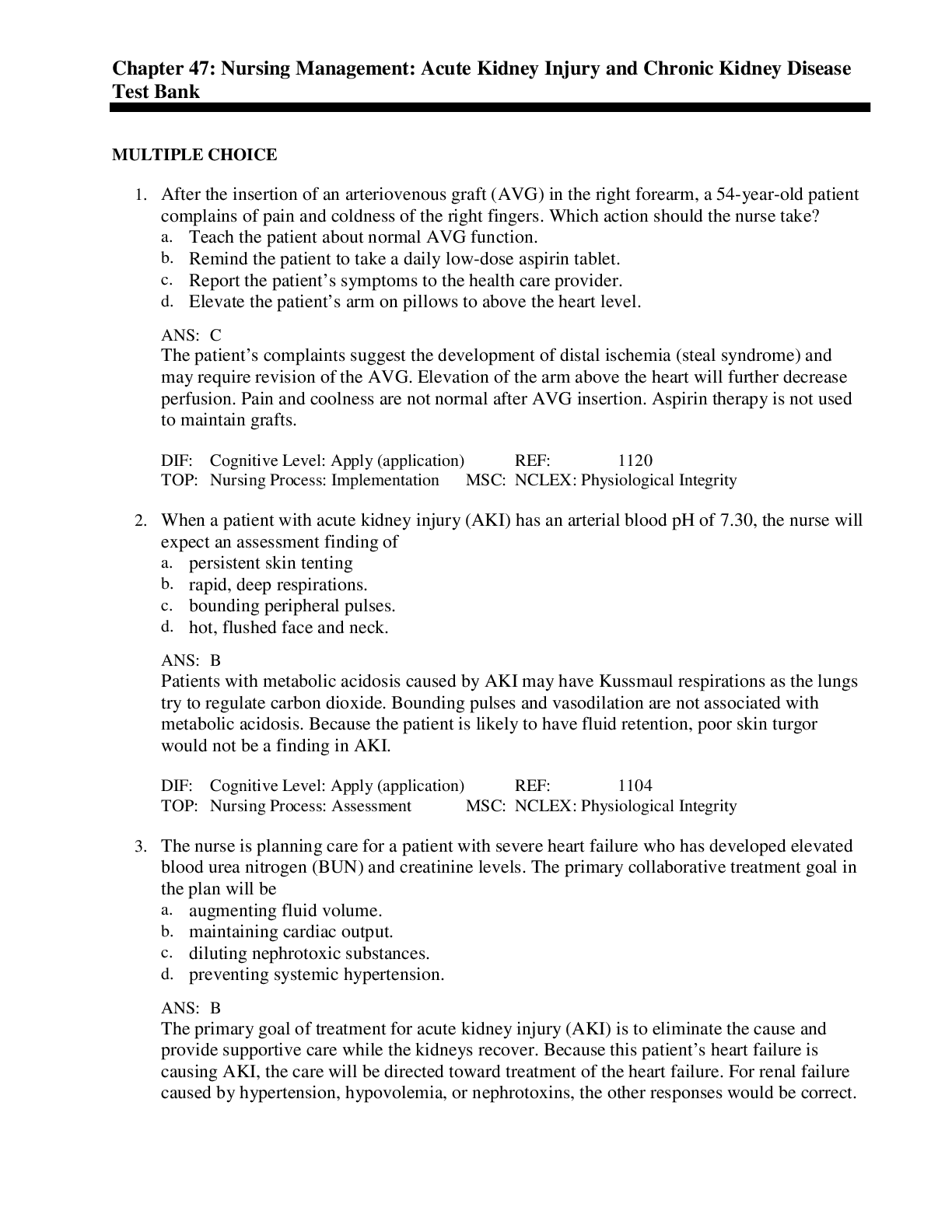Nursing Management: Acute Kidney Injury and Chronic Kidney Disease Test Bank (Chapter 47)
Course
Project Management
Subject
Chemistry
Category
Questions and Answers
Pages
13
Uploaded By
ATIPROS
Preview 4 out of 13 Pages
.png)

Download all 13 pages for $ 8.00
Reviews (0)
$8.00
